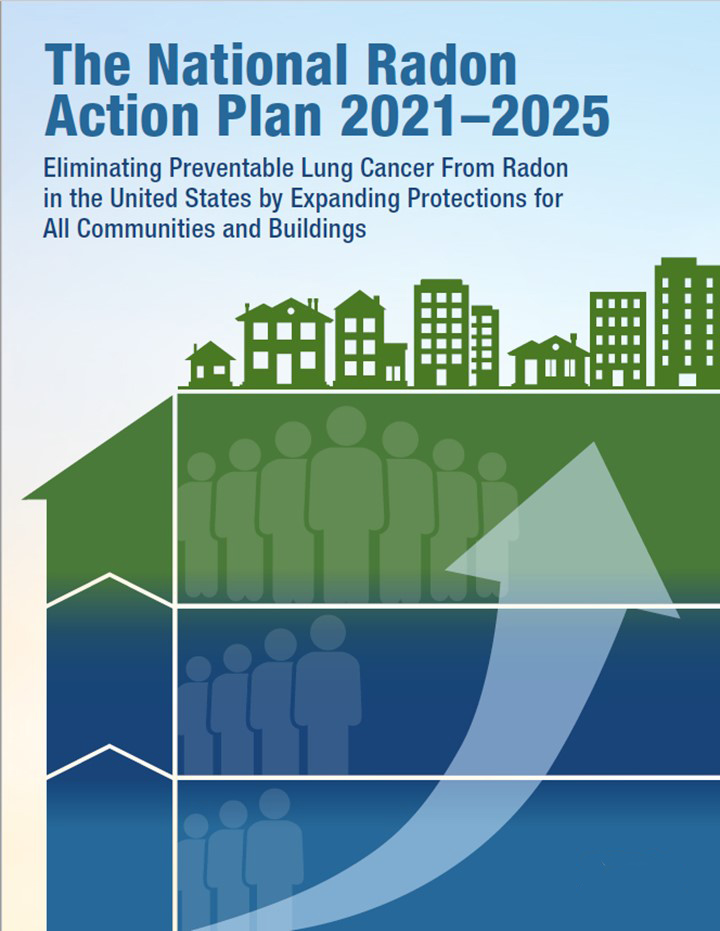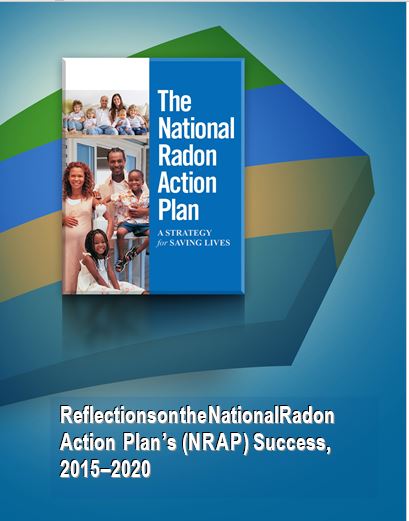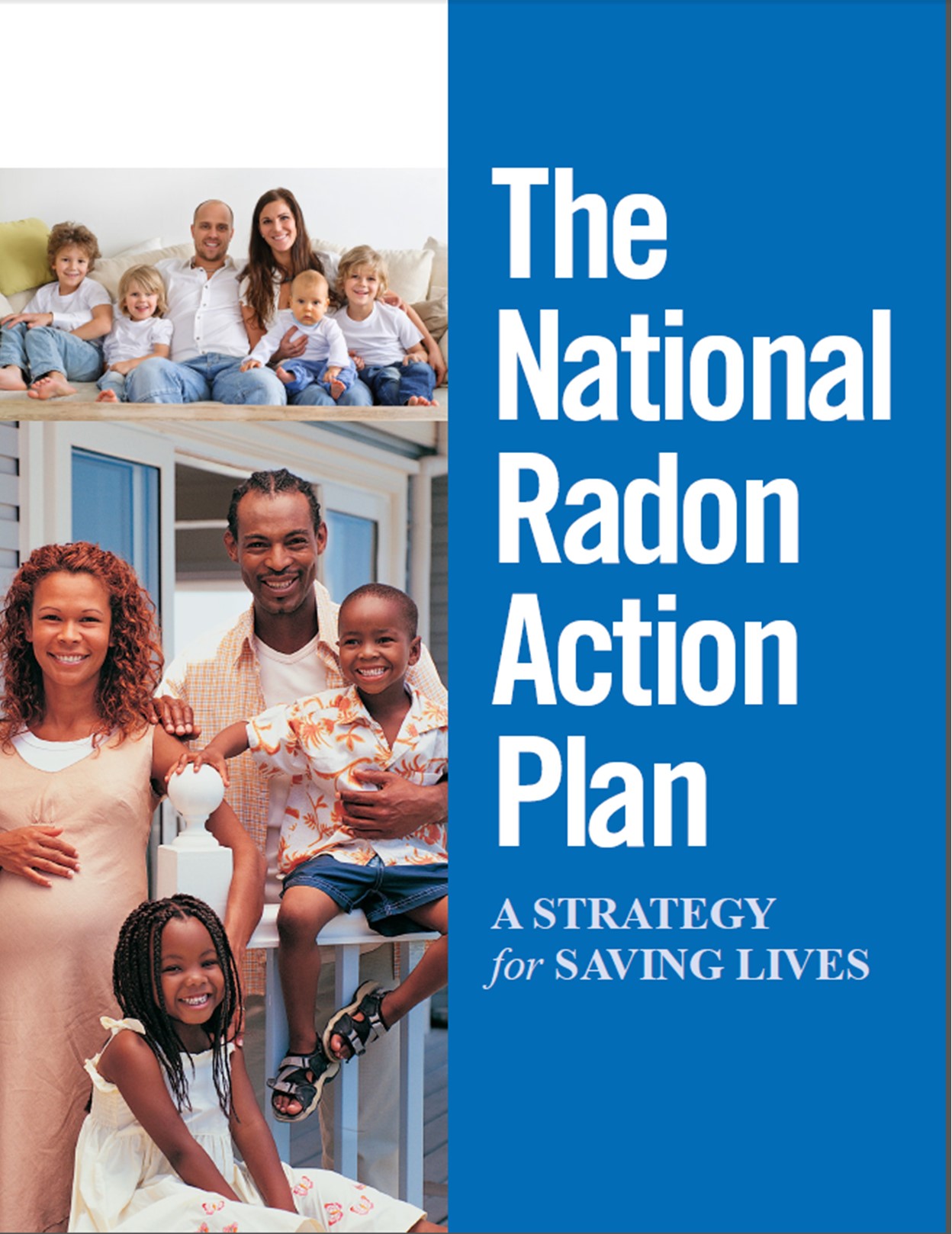The National Radon Action Plan - A Strategy for Saving Lives
Información disponible en español
On this page:
- National Radon Action Plan 2021-2025
- Reflections on the NRAP's Progress, 2015-2020
- The National Radon Action Plan
- National Radon Workgroup
- Federal Radon Action Plan
National Radon Action Plan 2021-2025

The NRAP|2021–2025 sets a goal for the nation to find, fix and prevent high indoor radon levels in 8 million buildings by 2025 and prevent 3,500 lung cancer deaths per year. Under this Plan, leaders from across multiple sectors are working together to plan, guide and sustain nationwide action to prevent exposure to radon.
For more information and to learn more about the NRAP Leadership Council's goal areas, strategies for action and target outcomes, please visit NRAP|2021-2025 on RadonLeaders.org.
Reflections on NRAP's Progress, 2015-2020

In 2015, the NRAP partners set a bold goal to mitigate 5 million high-radon homes and save 3,200 lives annually by 2020. For the last five years, NRAP partners have made progress towards this bold goal by building radon testing and mitigation practices into the systems that govern purchasing, financing, constructing and renovating buildings; creating incentives and funding for radon risk reduction; disseminating professional standards; and raising awareness of radon risk.
Moving forward, the multisector NRAP team is focused on developing the next version of the NRAP, while maintaining momentum and increasing impacts. Industry, nonprofit and public agencies aim to achieve this by broadening the scope of work, continuing to build a stronger national partnership, and incorporating radon requirements into housing financing and codes to achieve greater impact by 2025 .
For more information, please visit NRAP Progress on RadonLeaders.org.
The National Radon Action Plan

The National Radon Action Plan: A Strategy for Saving Lives outlines the framework for reducing radon risk in 5 million homes and saving 3,200 lives annually by 2020. Read the press release.
This Plan represents a collaborative effort between eleven organizations dedicated to eliminating avoidable radon-induced lung cancer in the United States. Led by the American Lung Association, the national radon workgroup agreed on a framework for action aimed at incorporating radon testing, radon mitigation and radon-resistant construction into systems that govern purchasing, financing, constructing and renovating homes and other buildings. This framework builds on early federal action that generated baseline progress by incentivizing radon action, testing for and mitigating high radon levels, and increasing visibility of the radon issue. Visit RadonLeaders.org to see the progress on each strategy outlined in the Plan.
To learn more about the National Radon Action Plan, please click on the link below.
National Radon Workgroup
- American Lung Association
- American Society of Home Inspectors
- Cancer Survivors Against Radon
- Centers for Disease Control and Prevention
- Children’s Environmental Health Network
- Citizens for Radioactive Radon Reduction
- Conference of Radiation Control Program Directors
- Environmental Law Institute
- Environmental Protection Agency
- Housing and Urban Development
- Indoor Environments AssociationTM (formerly AARST)
- National Center for Healthy Housing
- National Tribal Air Association
Federal Radon Action Plan
In 2010, several Federal Agencies took action to protect people and families from radon. The Federal Radon Action Plan , the FRAP, was a 2010–2016 effort to extend the reach, scope, and impact of these federal actions on radon. By 2015, eight nongovernmental organizations (NGOs) from industry and the not-for-profit sector joined these federal agencies to craft the National Radon Action Plan, or the NRAP: A Strategy for Saving Lives. Visit Federal Radon Action Plan to learn For more information on the FRAP commitments spurred a national ramp up in radon risk reduction.
